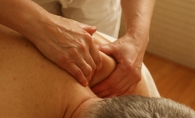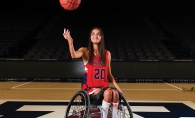Edina resident Albert Tsai is certainly aware of the importance of heart health. A researcher in the cardiovascular unit of the Minnesota Department of Health, he spends the better part of his weekdays ensuring communities throughout the state can be heart healthy. Nearly 10 years ago, a sudden cardiac arrest forced Tsai’s personal and professional lives to collide in an unexpected—and terrifying—way. But, thanks to a pair of quick-thinking strangers who were armed with knowledge of how to perform CPR, Tsai lives to tell his tale.
He says it started out like a typical weekday. After a meeting, Tsai headed back to his office in downtown St. Paul. While walking out of a parking ramp toward his office, he stumbled—and then fell—onto the sidewalk. He had gone into cardiac arrest.
At the time, there was a charter school between Tsai’s office building and the parking ramp. The school dismissed students early that day. “Teachers were outside, helping kids get on the buses. Two of them saw me go down, so they both rush over,” Tsai says. “I’m turning blue; I’m on my back. They called 911 right away, but because they also did CPR, they ended up saving my life.”
Tsai’s cardiac arrest was the result of a genetic heart condition—hypertrophic cardiomyopathy. “Essentially, it’s an enlarged heart,” he says. Though it’s a relatively common condition, affecting about one in every 500 people, it typically doesn’t result in the kind of trauma it did for Tsai that day, and it hadn’t previously posed any major health problems for him.
“I was diagnosed when I was in my early 20s, but for about 12 or 13 years of my diagnosis, I just lived with it, because it isn’t necessarily life-threatening, so to speak,” Tsai says. “I would just go to a cardiologist every year to get a check-up.”
Tsai says he’s thankful to many people for ensuring his cardiac arrest didn’t end his life: the paramedics who arrived quickly to defibrillate him, the doctors and nurses at Regions Hospital who cared for him while he recovered in the intensive care unit, and especially the two schoolteachers who saw him fall and responded quickly. Had they not been there and successfully performed CPR, Tsai most likely would have died.
“If someone stops breathing and their heart stops beating, there’s still oxygen-rich blood in their body,” says Justin Bell, regional vice president of advocacy for the American Heart Association’s Midwest affiliate. “If you can start chest compressions correctly, you can move that blood around and save their vital organs. That’s their best chance for survival.”
Every five years, the CPR guidelines are updated and have changed dramatically within the past 10 years. You may already be CPR-certified, but if you received your certification more than 10 years ago, chances are the version you learned isn’t what you would learn today.
Mouth-to-mouth breathing was once considered the most important part of CPR but is now a thing of the past. CPR has moved to a hands-only procedure.
If you see a teenager or adult collapse, your first step should be to immediately call 911. Then, push hard and fast against the center of the chest at 100 to 120 beats per minute—pushing to the tune Stayin’ Alive by the Bee Gees will do it!—until medical personnel arrives.
CPR can double—and in some cases triple—a cardiac arrest victim’s chance of survival. However, bystanders are often hesitant to perform it, either because they’re scared or simply don’t know what to do. Taking a class is the best way to make sure that you’re up-to-date on proper CPR techniques and able to act should the unthinkable happen.
Here in Edina, there are many opportunities to learn CPR. Blue Cross Blue Shield offers CPR classes at its Edina retail center to equip individuals with the knowledge to recognize when CPR is necessary and the skills to perform it correctly. The next class is coming up on October 19.
Since babies and children have smaller bodies than adults, they require a different set of CPR techniques. Amma Parenting Center in Edina regularly offers infant CPR and first aid classes, which are especially recommended for parents and caregivers.
Most people believe they can get proper CPR instruction when calling 911, but Bell says that belief often proves to be incorrect.
“Everyone thinks that when you call 911, the person on the other end of the phone can talk you through what to do, but unfortunately that’s just not the case,” he says. “Our best guess in Minnesota right now is that only about 60 percent of the time that actually happens.”
A new bill proposed by the American Heart Association may helps increase that figure to 100 percent. Telephone CPR (T-CPR) was introduced this past legislative session. In its final form, Bell says, the bill “will give all 911 dispatchers the option of either being trained in telephone CPR instruction or having a protocol to transfer that call quickly to someone who is trained.”
Though T-CPR isn’t the law of the land yet, the American Heart Association has high hopes for the upcoming legislative session and is happy with the progress made during the most recent session. Bell is hopeful that 2019 is the year they really advance this type of legislation.
There are many ways for citizens to get involved in T-CPR advocacy efforts, as well as the American Heart Association’s other volunteer programs. Visit yourethecure.org to sign up for whatever it is you’d like to be involved in. However, the simplest—and perhaps most important—way to make a difference is to learn CPR. As Tsai’s story shows, it may very well be the difference between life and death.
Menu
Learn CPR to Help Save a Life
CPR is a life-saving skill most anyone can learn.









